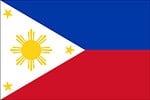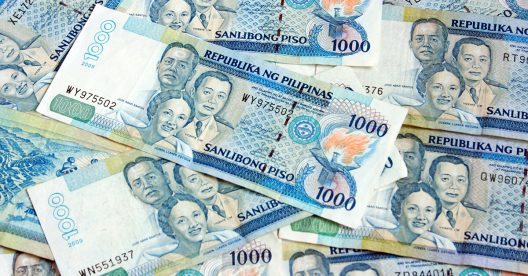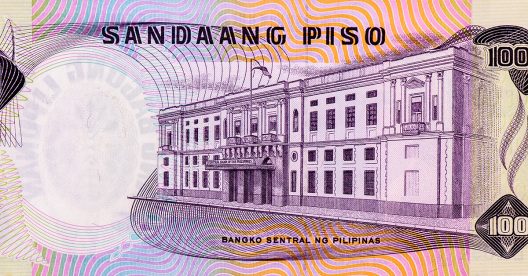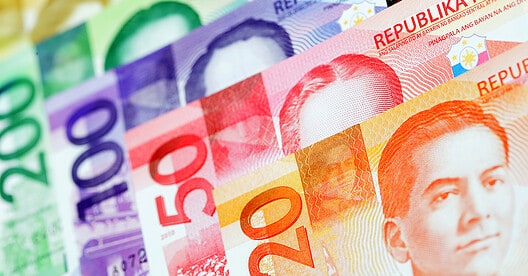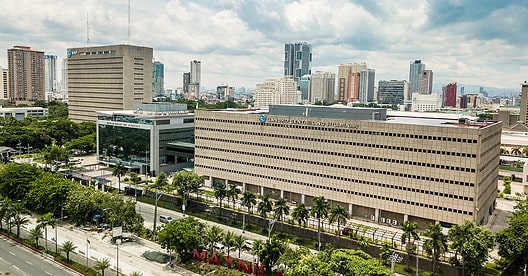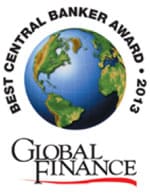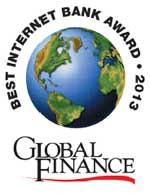Includes The Philippines real Gross Domestic Product growth rate, with latest forecasts and historical data, GDP per capita, GDP composition and breakdown by sector.
Browse additional economic indicators and data sets, selected by Global Finance editors, to learn more about The Philippines economic outlook, debt to GDP ratio, international trade performance and population trends. Rankings of The Philippines best banks and safest banks are also available.
Basic Information
Government Type: Presidential republic
Capital City: Manila
GDP & Economic Information
Macroeconomy & Sovereign Data
| Central Bank | Central Bank of the Philippines (Bangko Sentral ng Pilipinas) |
|---|---|
| Currency | Philippine pesos (PHP) |
| International Reserves |
USD 79.2 billion (2018) International Monetary Fund (IMF), data retrieved October 2019 |
| Gross Domestic Product – GDP | USD 330.8 billion (2018, estimate) |
| GDP (Purchasing Power Parity) | Intl$ 952.6 billion (2018, estimate) |
GDP Data
| Real GDP growth |
2007 6.6% 2008 4.2% 2009 1.1% 2010 7.6% 2011 3.7% 2012 6.7% 2013 7.1% 2014 6.1% 2015 6.1% 2016 6.9% 2017 6.7% 2018* 6.2% *Estimate |
|---|---|
| GDP per capita – current prices | USD 3,103.6 (2018, estimate) |
| GDP per capita – PPP | Intl$ 8,935.9 (2018, estimate) |
| GDP (PPP) – share of world total |
1980 0.71% 1990 0.61% 2000 0.54% 2010 0.59% 2019* 0.73% |
| GDP – composition by sector |
agriculture: 9.3% industry: 30.7% services: 50% (2018 estimate) |
| Gross domestic expenditure on R&D; (% of GDP) | N/A |
| Inflation |
2015 0.7% 2016 1.3% 2017 2.9% 2018* 5.2% 2019* 2.5% *Estimate |
The Philippines
Inflation & Debt
| Inflation |
2015 0.7% 2016 1.3% 2017 2.9% 2018* 5.2% 2019* 2.5% *Estimate |
|---|---|
| Government Bond Ratings |
Standard & Poor’s: BBB+ Moody’s: Baa2 Standard & Poor’s / Moody’s |
| Unemployment rate |
2015 6.3% 2016 5.5% 2017 5.7% 2018* 5.3% 2019* 5.2% *Estimate |
| Household saving rates | N/A |
| Public debt (General government gross debt as a % of GDP) |
2015 41.5% 2016 39% 2017 39.9% 2018* 38.9% 2019* 39.3% *Estimate |
| Public deficit (General government net lending/borrowing as a % of GDP) |
2015 0.6% 2016 -0.4% 2017 -0.4% 2018* -1.6% 2019* -1.1% *Estimate |
| Market value of publicly traded shares |
2016 USD 239.7 billion 2017 USD 290.4 billion 2018 USD 258.2 billion |
| Largest Companies | BDO Unibank, SM Investments, Top Frontier Investment Holdings, Ayala, Metropolitan Bank & Trust, JG Summit Holdings |
Import/Export
| Exports as percent of GDP (Exports of goods and services) |
31.7% (2018) |
|---|---|
| Shares in world total merchandising export | 0.35% (2018) |
| Shares in world total commercial services export | 0.65% (2018) |
| Total exports | USD 88.0 billion (2018) |
| Export commodities | Semiconductors and electronic products, machinery and transport equipment, wood manufactures, chemicals, processed food and beverages, garments, coconut oil, copper concentrates, seafood, bananas/fruits |
| Total imports | USD 127.7 billion (2018 estimate) |
| Import commodities | Electronic products, mineral fuels, machinery and transport equipment, iron and steel, textile fabrics, grains, chemicals, plastic |
| Exports – major partners | Japan 16.4%, US 14.6%, Hong Kong 13.7%, China 11%, Singapore 6.1%, Thailand 4.3%, Germany 4.1%, South Korea 4% (2017) |
| Imports – major partners | China 18.1%, Japan 11.4%, South Korea 8.8%, US 7.4%, Thailand 7.1%, Indonesia 6.7%, Singapore 5.9% (2017) |
Competitiveness & Trade
| Current account balance | USD -8.7 billion (2018 estimate) |
|---|---|
| Current account balance by percentage of GDP | -2.6 % (2018 estimate) |
| FDI inflows |
2016 USD 6,915 million 2017 USD 8,704 million 2018 USD 6,456 million |
| FDI Outflows |
2016 USD 1,032 million 2017 USD 1,752 million 2018 USD 602 million |
| Value of cross-border M&A, by country of purchaser |
2015 USD 1,485 million 2016 USD 415 million 2017 USD 348 million 2018 USD 1,201 million United Nations Conference on Trade and Development (UNCTAD) – World Investment Report |
| Cross-border M&A deals worth over $3 billion completed in 2014 | N/A |
| Cross-border M&A deals worth over $3 billion completed in 2015 | N/A |
| Best countries for doing business |
Economies are ranked on their ease of doing business. A high ease of doing business ranking means the regulatory environment is more conducive to the starting and operation of a local firm. Overall ranking: 95 out of 190 countries Subcategories: Starting a Business: 171 out of 190 countries Dealing with Construction Permits: 85 out of 190 countries Getting Electricity: 32 out of 190 countries Registering Property: 120 out of 190 countries Getting Credit: 132 out of 190 countries Protecting Minority Investors: 72 out of 190 countries Paying Taxes: 95 out of 190 countries Trading across Borders: 113 out of 190 countries Enforcing Contracts: 152 out of 190 countries Resolving Insolvency: 65 out of 190 countries |
| Global competitiveness ranking |
64 out of 141 countries (2019) |
| Index of Economic Freedom |
Ranking: 70 / Score: 63.8 (Moderately free) (100=totally free 0=totally repressed) |
Population & Geographic Data
| Total Area | 300,000 sq km |
|---|---|
| Total Population |
1990 60.94 Million 2000 77.02 Million 2010 92.6 Million 2015 101.56 Million 2020 110.04 Million |
| Urban population as % of total population |
1960 30.3% 1980 37.5% 2000 46.1% 2018 46.9% |
| Population median age | 23.7 years |
| Population growth rate | 1.55% (2018 estimate) |
| Life expectancy | 69.6 years (2018 estimate) |
| % of population living on less than $3.10 a day | 26% (last available estimate, 2015) |
| Inequality of wealth distribution (Gini index) | 44.4 (last available estimate, 2015) |
| Freedom House rating |
Partly Free Political Rights: 3 Civil Liberties: 3 (2019) (1 represents the most free, 7 the least free rating) |
| Total telephone subscribers as % of population |
Fixed: 4% Mobile: 110.1% (2017) (fixed-telephone subscribers and mobile-cellular subscribers) |
| Internet users as % of total population | 60.05 % (2017) |
Language & Religon
| Languages |
Albanian 98.8% (official – derived from Tosk dialect), Greek 0.5%, other 0.6% (including Macedonian, Romani, Vlach, Turkish, Italian, and Serbo-Croatian), unspecified 0.1% (2011 est.) CIA World Factbook / Languages |
|---|---|
| Literacy |
Total population: 38.2% Male: 52% Female: 24.2% Definition: age 15 and over can read and write (2015 est.) (age 15 and over can read and write) |
| Religions |
Muslim 56.7%, Roman Catholic 10%, Orthodox 6.8%, atheist 2.5%, Bektashi (a Sufi order) 2.1%, other 5.7%, unspecified 16.2% (2011 est.) CIA World Factbook / Religions |
World Rankings
| Population | 110.04 million |
|---|---|
| Mercer Cost of living index | Manila: 109th (2019) |
| C02 Emissions per capita | 1.05 metric tons per capita (2014) |
Global Finance Rankings & Awards: The Philippines
Global Finance Magazine holds several conferences and awards ceremonies throughout the year to recognize the winning financial institutions and companies in a host of categories including World’s Best Trade Finance Banks, World's Biggest Banks, World's Safest Banks, World's Best Developed & Emerging Markets Banks, World's Best Internet Banks, and World’s Best Investment Banks.
Data Sources:
IMF World Economic Outlook
UN World Population Prospects
World Inequality Report
S&P Global Ratings
Moody’s
Fitch Ratings
IMF Direction of Trade Statistics (DOTS)
UN Conference on Trade and Development (UNCTAD)
CIA The World Factbook
World Bank’s World Integrated Trade Solution
Forbes Global 2000
